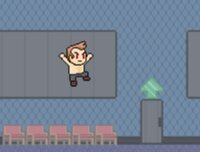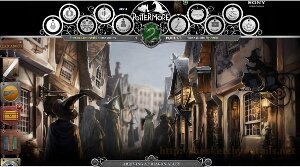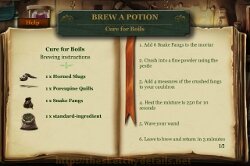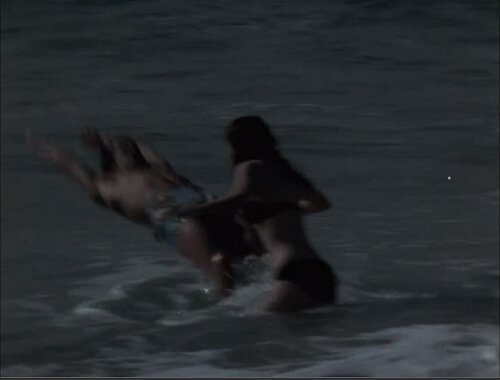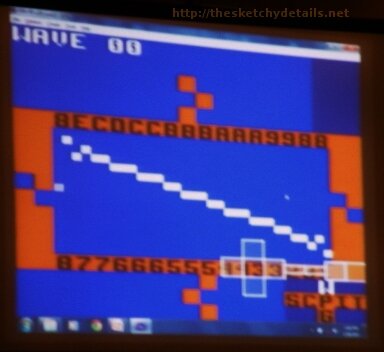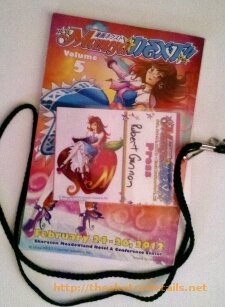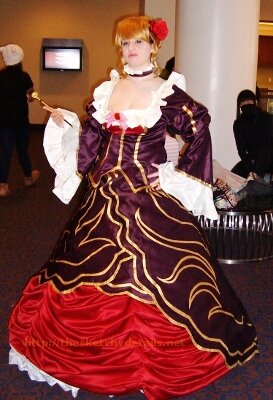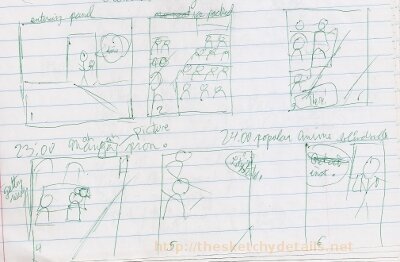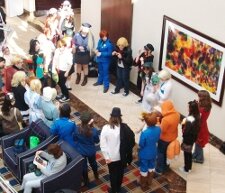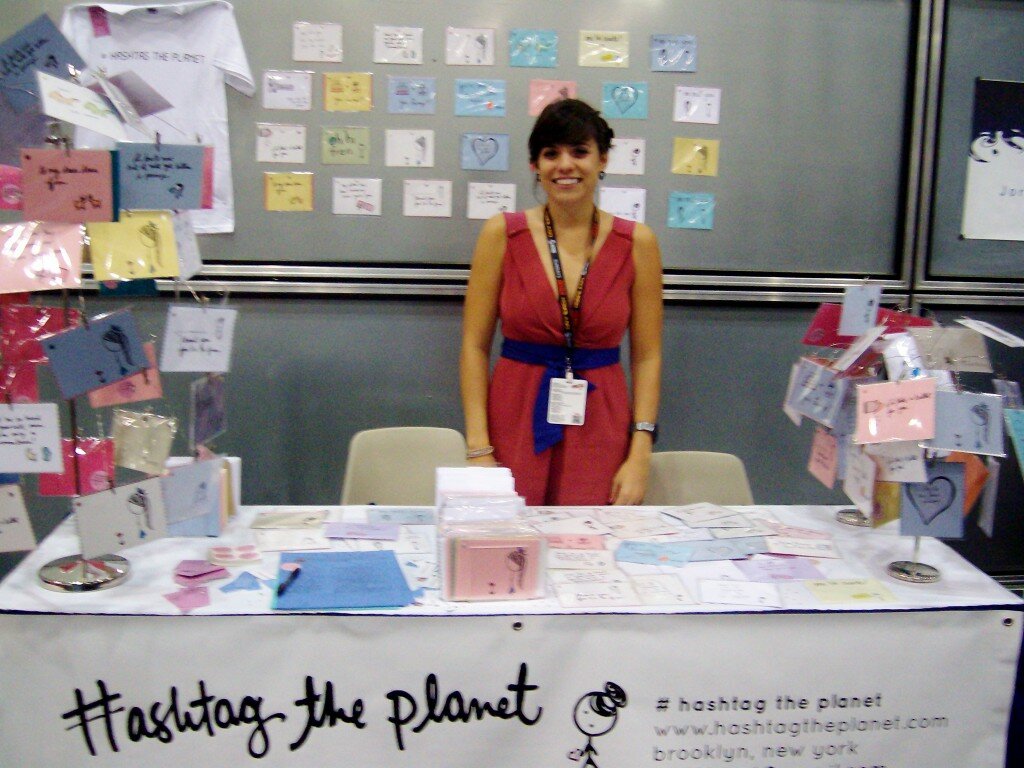I’ve been going to conventions for over 20 years now. I started with my parents and brother, going to comic book expos and fan conventions with kids days. Then, as a teenager, I started going off to horror conventions and niche TV events in the tristate area. I’m always willing to give a new convention a chance if my schedule is open and the tickets are reasonably priced.
I had done seemingly everything at conventions. I’ve shopped like a maniac with no impulse control. I’ve met celebrity guests and left a strong enough impression with a few kind words to be recognized at later events. I’ve entered contests, tried demos, and and spent entire weekends panel hopping.
The only thing I hadn’t done was cosplay. Going to New York Comic Con on a fan badge, rather than a press badge, to cover the event gave me the means to go for it. I have a certain uniform I wear as a writer that people have come to know me by. I’m the really young looking guy in the bright shirt/tie combo and thick prescription glasses walking around with a notepad and camera all weekend long.
For NYCC, I wanted to explore not just the experience of cosplay but reactions to various styles of cosplay. I decided to stick to contemporary film and television based on mainstream clothing and some movie magic. I also chose a cult figure, a cartoon character, and an original character inspired by a very popular and recognizable franchise. The results were interesting.
Day 1: The Cult Figure
Friday at NYCC is like the training ground for experienced convention attendees. It’s crowded, but you can still walked down all the aisles and get a feel for the convention. I went with the assumption that people willing to take a day off from work would better recognize a cult character.
 I chose to go as Shaun from Shaun of the Dead for a number of reasons. One, I’m a big fan. Two, it’s as complicated as you want it to be. I actually grew out a goatee, colored my dirty blonde hair ginger–eyebrows and goatee included–with greasepaint, put together a replica bouquet as a prop, and did the shirt up with fabric paint by way of my home haunting knowledge for shocking realism. Three, I knew he was a character I could get away with even at my size.
I chose to go as Shaun from Shaun of the Dead for a number of reasons. One, I’m a big fan. Two, it’s as complicated as you want it to be. I actually grew out a goatee, colored my dirty blonde hair ginger–eyebrows and goatee included–with greasepaint, put together a replica bouquet as a prop, and did the shirt up with fabric paint by way of my home haunting knowledge for shocking realism. Three, I knew he was a character I could get away with even at my size.
The day went basically how I expected it to. The small percentage of people who recognized the character went nuts over the cosplay. As soon as I walked into the absurd basement holding pen for the show floor, I was stopped by a con volunteer raving about the cosplay. People would walk by and say, “You have red on you,” and many of the people who stopped me said I actually looked like Simon Pegg. Sure, a short Simon Pegg with an extra fifty pounds. I got more than one “aww” when I bust out the bouquet, as well.
The experience on Day 1 was great. It took me a little while to adjust to the attention but it didn’t feel nearly as strange or unnerving as I expected. I was just a fan paying tribute like all the other fans there.
Day 2: The Cartoon
Day 2 was going to be the big day of the convention: Saturday. More people show up and stay on the floor because they actually can. Everything seems more crowded as one day or weekend only attendees rush to fit everything in. I chose to go with a character I’ve seen a lot because I wanted to explore how the more hardened con-goers respond to a costume they’ve seen over and over again.
 I chose Fry from Futurama for the same reasons as the Shaun costume. No one would mind my type if I got the details correct. I sculpted my own wig–actually did more styling after this photo to clean up the back and side–with scissors and mousse, altered a strange hoodie with a rigid color underneath to be the jacket, and threw on my clean black Converse and bright blue jeans. I also added a sign to my water bottle so that I could take off the jacket throughout the day if the floor got too hot without losing the character.
I chose Fry from Futurama for the same reasons as the Shaun costume. No one would mind my type if I got the details correct. I sculpted my own wig–actually did more styling after this photo to clean up the back and side–with scissors and mousse, altered a strange hoodie with a rigid color underneath to be the jacket, and threw on my clean black Converse and bright blue jeans. I also added a sign to my water bottle so that I could take off the jacket throughout the day if the floor got too hot without losing the character.
Again, I was not particularly surprised by the reaction. I had a lot of catcalls taken from the show: “Shut up and take my money;” “Not sure if…;” etc. People called out, “Fry,” every few minutes but only three people wanted to take a photo; one of them thought I was TinTin.
 I had fun dressed as Fry for the day, but feel like I want to revisit it with an unexpected twist on the costume. I’m well-versed enough in sewing and electronics to do a cool spin on “My Three Suns,” where Fry drinks the emperor.
I had fun dressed as Fry for the day, but feel like I want to revisit it with an unexpected twist on the costume. I’m well-versed enough in sewing and electronics to do a cool spin on “My Three Suns,” where Fry drinks the emperor.
The bigger takeaway for me on Day 2 was having confidence while cosplaying. I fully intended to enter the costume contest on Saturday night to be able to write about the experience; I didn’t. I backed out at the last minute and watched as thirty people–some in store-bought costumes, others in poorly made costumes–get onstage for hundreds of people and stand up as their character. I could and should have done the same.
Day 3: The Dreaded O.C.
If there’s one thing I know about cosplay, it’s that cosplaying as an original character can be controversial. Other people spend weeks trying to recreate a beloved character while you show up dressed as something wholly new. You’re doing it as a fan, but you’re not exactly playing by the common rules.
My O.C. was a Slytherin student traveling to NYCC to recover stolen artifacts. I had the licensed tie, a hand-painted beanie with the crest on it, and a variety of mismatched black and green clothing. I also put on fake scars ala Umbridge punishing students with lines about supporting Voldemort and painted snake tattoos onto the opposite arm. I also had a wand I made myself years ago.
The reaction was what I expected. I totally over thought the concept and only had a few people realize what was happening. It wasn’t a big let down, either. I had no wig to take off (ripping out hair in the process) and no need to shampoo my hair eight times until it was my color again. I had fun putting that character together, but would stick to existing characters in the future.
Doing this cosplay experiment opened up a new side of fan culture to me. It was fun to go around in character all day. It was a great ice breaker with fans, guests, and exhibitors I wanted to talk to. I felt like a much more active participant in NYCC and like I actually belonged.
Have you ever done cosplay at a convention? Have thoughts on awesome cosplay you’ve seen? Sound off below.





 Last year, they had stacks of programs at each entrance that were handed out by volunteers when the floor opened. This year, if you didn’t know where they hid the programs, you weren’t getting them. NYCC developed a poorly functioning event app that routinely crashed and had inaccurate information that they wanted people using instead of paper programs. However, behind each vacant information booth–who knows where they moved those volunteers this year?–was a hoard of paper programs. If you don’t know the schedule, you don’t know what events are happening throughout the weekend.
Last year, they had stacks of programs at each entrance that were handed out by volunteers when the floor opened. This year, if you didn’t know where they hid the programs, you weren’t getting them. NYCC developed a poorly functioning event app that routinely crashed and had inaccurate information that they wanted people using instead of paper programs. However, behind each vacant information booth–who knows where they moved those volunteers this year?–was a hoard of paper programs. If you don’t know the schedule, you don’t know what events are happening throughout the weekend. There were two big issues with the convention layout this year that could have easily been avoided. First, the entrance hallways to the main show floor were very narrow this year. One large path that could take you from the far left to the far right was always clear. Too bad it would take you 20 minutes to go 50 feet to reach it. This was not a problem last year when the main floor was three connected halls. This year, with only two, the ability to walk through the floor was so poor that, even with a four day pass, you couldn’t have made it through every booth unless you skipped all the panels and events.
There were two big issues with the convention layout this year that could have easily been avoided. First, the entrance hallways to the main show floor were very narrow this year. One large path that could take you from the far left to the far right was always clear. Too bad it would take you 20 minutes to go 50 feet to reach it. This was not a problem last year when the main floor was three connected halls. This year, with only two, the ability to walk through the floor was so poor that, even with a four day pass, you couldn’t have made it through every booth unless you skipped all the panels and events. My disappointment on the first day stemmed from how much smaller the show floor was. However, once I got to check out the panel hall, autograph hall, and all the other annexes at the convention, I started to really dig the feel of it. The main floor was too crowded, sure, but the whole convention just felt more relaxed. There was no high stress “gotta have it” panicking. Dealers seemed more comfortable dealing with a steadier flow of people to their booths. Even the fans seemed to lose the “too crowded must run” edge once they got out of the narrow entrance ways.
My disappointment on the first day stemmed from how much smaller the show floor was. However, once I got to check out the panel hall, autograph hall, and all the other annexes at the convention, I started to really dig the feel of it. The main floor was too crowded, sure, but the whole convention just felt more relaxed. There was no high stress “gotta have it” panicking. Dealers seemed more comfortable dealing with a steadier flow of people to their booths. Even the fans seemed to lose the “too crowded must run” edge once they got out of the narrow entrance ways. What can I say about the amazing volunteers and employees at NYCC this year? They were great. They knew their positions like the back of their hands. They were kind, courteous, and able to calm down even the most agitated guest. Though their positions throughout the convention didn’t make the most sense (why were the information booths vacant most of the time?), they were easily able to help you once you found them.
What can I say about the amazing volunteers and employees at NYCC this year? They were great. They knew their positions like the back of their hands. They were kind, courteous, and able to calm down even the most agitated guest. Though their positions throughout the convention didn’t make the most sense (why were the information booths vacant most of the time?), they were easily able to help you once you found them.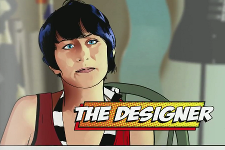 Holly stood out from the other subjects in the documentary because she didn’t view the convention in the same way. With a dry wit and a laser focus on one aspect of Comic-Con, she was not the typical comic fan you would expect in this kind of documentary. Obviously she’s a fan. She was just really focused on showcasing her work in that contest.
Holly stood out from the other subjects in the documentary because she didn’t view the convention in the same way. With a dry wit and a laser focus on one aspect of Comic-Con, she was not the typical comic fan you would expect in this kind of documentary. Obviously she’s a fan. She was just really focused on showcasing her work in that contest.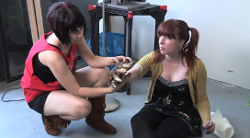 The second episode focused on creating an Infinity Gauntlet (a super-powered weapon wielded by Thanos in the Marvel universe) and is a fast look at fabrication. Holly drafts a quick paper pattern, then cuts away at foam until she has something resembling the Infinity Gauntlet. Then it’s all carving, gluing, sealing, and painting from there.
The second episode focused on creating an Infinity Gauntlet (a super-powered weapon wielded by Thanos in the Marvel universe) and is a fast look at fabrication. Holly drafts a quick paper pattern, then cuts away at foam until she has something resembling the Infinity Gauntlet. Then it’s all carving, gluing, sealing, and painting from there.